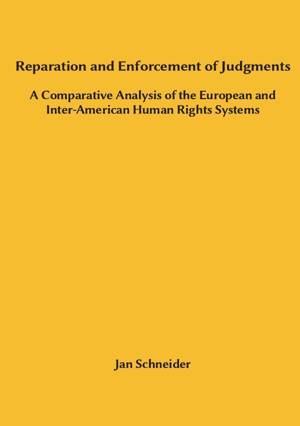
- Afhalen na 1 uur in een winkel met voorraad
- Gratis thuislevering in België vanaf € 30
- Ruim aanbod met 7 miljoen producten
- Afhalen na 1 uur in een winkel met voorraad
- Gratis thuislevering in België vanaf € 30
- Ruim aanbod met 7 miljoen producten
Reparation and Enforcement of Judgments
A Comparative Analysis of the European and Inter-American Human Rights Systems. Dissertationsschrift
Jan Schneider
Paperback | Engels
€ 29,95
+ 59 punten
Omschrijving
Both the European and the Inter-American Courts of Human Rights are empowered to issue reparation judgments that are binding for the member states. Interestingly, though, while the European Court's reparation powers are limited by the principle of subsidiarity, the European human rights protection system provides a specific procedure to ensure execution of judgments. On the contrary, under the American Convention on Human Rights the Inter-American Court of Human Rights has broad reparation powers. This, however, does not correlate with a dedicated procedure to monitor execution under the inter-American human rights protection system. This gap has prompted the Inter- American Court to create, by way of interpretation of the American Convention, its own monitoring procedure.The author compares the reparation practice of both courts, shows their respective limitations and potential for development. He then critically evaluates the execution records under both human rights protection systems and proposes possible modifications with a view to improving the enforcement of judgments.
Specificaties
Betrokkenen
- Auteur(s):
- Uitgeverij:
Inhoud
- Aantal bladzijden:
- 296
- Taal:
- Engels
Eigenschappen
- Productcode (EAN):
- 9783737583176
- Uitvoering:
- Paperback
- Afmetingen:
- 148 mm x 210 mm
- Gewicht:
- 386 g

Alleen bij Standaard Boekhandel
+ 59 punten op je klantenkaart van Standaard Boekhandel
Beoordelingen
We publiceren alleen reviews die voldoen aan de voorwaarden voor reviews. Bekijk onze voorwaarden voor reviews.










